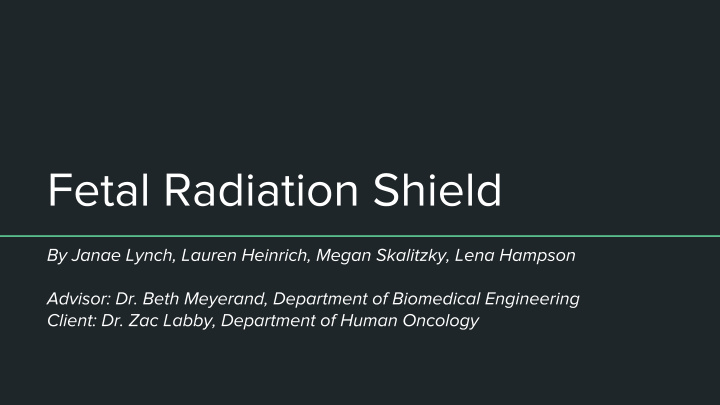



● ○ ● ○ ● [Figure 1] Diagram of potential sources of radiation while undergoing therapy [1]
● ○ ○ ● ○ ○ ○ ○ ○
● ○ ○ ● ○ ○ ● [Figure 2] CAD Model of shield. Patient bed is situated under lead shield (blue) with six supports on either side.
● ● ○ ○ ○ ■ ○ [Figure 3] Typical treatment rooms at UW Hospital
● ○ ■ ○ ○ ● ○ ○ ○
● ○ ○ ○ ● ○ ○ ○
● ○ ○ ● ○ ○ ○
● ○ ○ ● ○ ○ ○
● ● ● ● ● ●
Table 1. Evaluation of the four designs quickly ruled out the feasibility of “The Trolley” and revealed that “The Semi” best meets our design criteria.
● Improve current shield design ● Mechanical testing of final prototype ● Third party review of design ● Manufacturing ● Clinical testing [Figure 4] Picture of radiation device in use
● Budget constraints ● Force plate limitations ● Full movement of current [Figure 5] Picture of radiation device with force plate radiation device ● Testing device [Figure 6] Picture of radiation device 90 degrees from patient head
Dr. Elizabeth Meyerand, Advisor Dr. Zachariah Labby, Client
[1] "Radiation Protection For The X-Ray Technologist", 2017. [Online]. [2] M. Stovell and C. Robert Blackwell, "501 Fetal dose from radiotherapy photon beams: Physical basis, techniques to estimate radiation dose outside of the treatment field, biological effects and professional considerations", International Journal of Radiation Oncology*Biology*Physics, vol. 39, no. 2, p. 132, 1997. [3] D. D. Martin; Review of Radiation Therapy in the Pregnant Cancer Patient; Clinical Obstetrics and Gynecology, Review vol. 54, no. 4, pp. 591-601, Dec 2011.
Recommend
More recommend